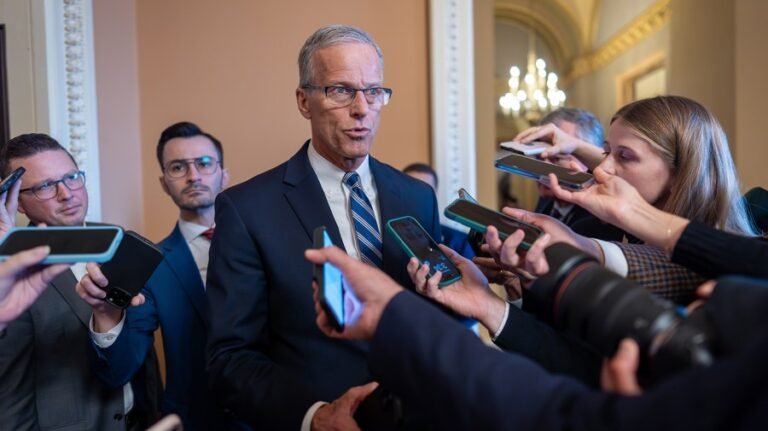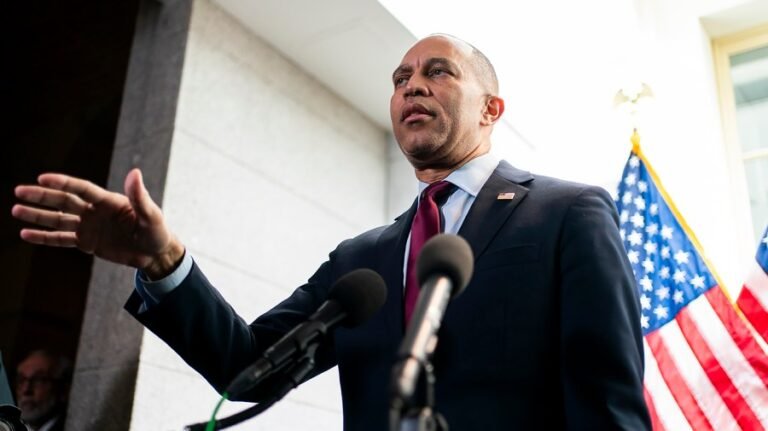
President Trump and Democrats are fighting over affordability after voters delivered a major rebuke to the Republican Party in key elections this week.
Democrats notched blowout victories in the New Jersey and Virginia governors races Tuesday, flipping state legislative seats in red districts and recapturing areas that shifted rightward along the way.
Strategists in both parties attributed the Democratic victories to growing concerns about the rising cost of living and unique ways that successful Democratic candidates addressed them.
The annual inflation rate rose to 3 percent in September, as measured by the consumer price index, equaling its level when Trump took office in January. The president, however, has dismissed Democratic messaging on affordability as a “con.”
Here is how much the prices for certain categories of goods and specific products have changed over the past year, according to the September CPI report — the latest data from the Bureau of Labor Statistics (BLS).
Overall inflation: 3 percent
Prices in general are up 3 percent since September 2024, which is 1 percentage point above the Federal Reserve’s target of 2 percent.
After remaining close to the Fed’s target for years, inflation shot up in the aftermath of the COVID-19 pandemic before peaking at 9.1 percent in June 2022. Inflation has fallen toward the Fed’s target in the years since, but has yet to return to it.
Energy: up 2.8 percent
The rising cost of energy played a key role in the Virginia and New Jersey governors races, even with gas prices falling. While lower gasoline prices helped ease some of the blow, prices for other sources of energy rose sharply.
Gasoline: down 0.5 percent
Unlike other energy commodities and services, gasoline has gotten cheaper over the past year. Propane, kerosene and firewood prices are also down 3.9 percent over the past year.
Gas prices usually have a considerable impact on consumer sentiment, especially during stressful economic times, but have been washed out by rising prices in other areas.
Electricity: up 5.1 percent
Electricity prices were a primary focus for Gov.-elect Mikie Sherrill (D-N.J.), who proposed a utility cap in the Garden State after a 22 percent annual increase in electric bills.
Experts say the sharp increase in electric bills is driven by both higher energy demand from new data centers and a lack of infrastructure to help meet that demand.
Utility gas service: up 11.7 percent
No other sub-category of energy got more expensive over the past year than piped gas for ranges and heaters.
Food: up 3.1 percent
Egg prices have fallen 1.3 percent over the past year, easing after a bird flu outbreak drastically cut the national supply. But prices for many other staple foods and food groups have gotten significantly higher.
Beef prices are up 14.7 percent since September 2024 due to a combination of Trump’s tariffs and a steep decline in the U.S. supply of cattle. Bacon is up 5.8 percent, though pork generally is only up 1.6 percent and prices for fresh whole chicken have stayed flat.
Dairy prices have been largely stable, and prices for fruits and vegetables are up just 1.3 percent over the past year. But prices for certain staples that are not widely grown in the U.S. have shot up, thanks largely to tariffs.
Banana prices are up 6.9 percent annually, and coffee prices are up almost 19 percent.
Household furnishings and supplies: up 3 percent
The broad category of goods including furniture, appliances, decor and household goods covers a significant portion of products imported to U.S. Tariffs have yet to show up significantly in prices for many of these products.
Apparel: down 0.1 percent
Trump’s decision to close the de minimis loophole sent shockwaves among fast fashion companies responsible for a flood of cheap foreign clothing. But clothing prices on the whole are lower over the past year.


